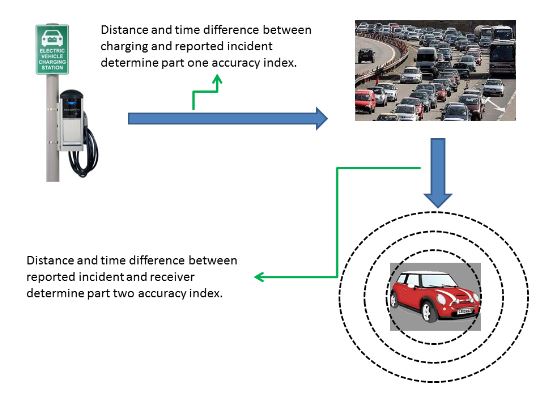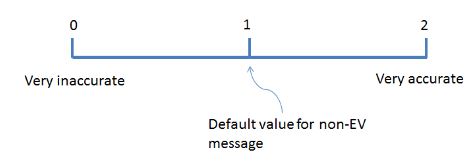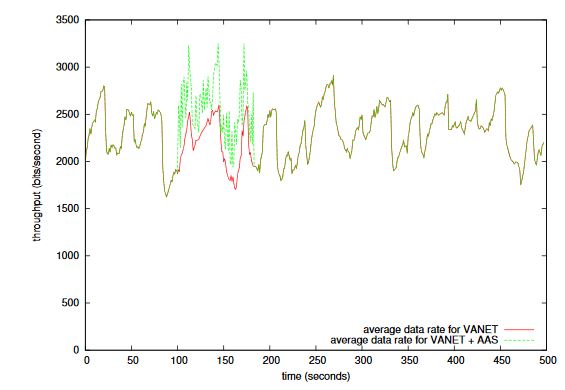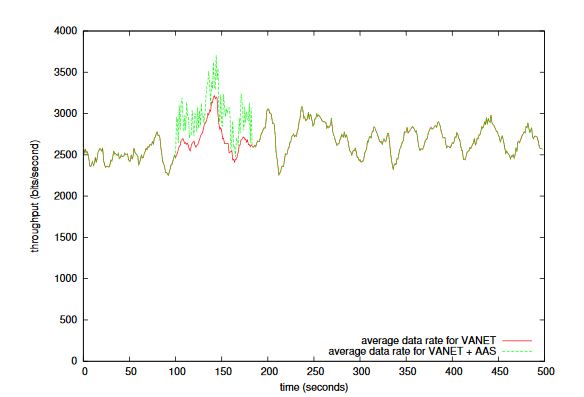ABSTRACT
Vehicular Ad Hoc Network (VANET) allows vehicles to exchange information about road and traffic conditions through wireless communications. Nevertheless, providing reliable and authenticated information without violating the user’s privacy seems contradictory. In this paper, we propose an Anonymous Announcement System especially designed for Electric Vehicle (EV) in VANETs to achieve the aforementioned contradictory goals. We demonstrated the feasibility of the protocol with a prototype implementation on a suitable device and a network simulation with our protocol added on top of a normal VANET.
RELATED WORK
We briefly discuss various cryptographic primitives that could be applied to this specific problem and discuss the obstacles for their directly applications. They are not employed in our system. An anonymous credential or pseudonymous system, first introduced by Chaum, is a system in which a user obtains a credential from an issuer and demonstrates the possession of the credential to a verifier who only has the public information of the issuer.
OVERVIEW OF THE AAS SOLUTION

Figure 2: The Concept of Accuracy Index
Finally we add up the index of part one and part two. The score should be in between 0 and 2. If it is near 0, that means it is not accurate and if it is near 2, that means it is very accurate. This is the accuracy index from one vehicle. The concept of accuracy index is illustrated in Figure 2.
OUR PROPOSED SYSTEM

Figure 3: Overall accuracy index
After multiplying, the two partial indices will be added up together. Thus the final index will be from 0 to 2. 0 represents the message is very inaccurate, while 2 represents the message is very accurate. For messages sent from non-EV, as there is no authenticated location and time information, we give a medium value for those messages. This “value bar” is shown in Figure 3.
SECURITY ANALYSIS
We informally show that our Anonymous Announcement System (AAS) for Electric Vehicle in VANETs provides reliability and privacy. Following our accuracy calculation formula and a threshold of 10, each announcement m endorsed by a signature (ID, Loc, time, Y, R, z, U, c, w) can have an accuracy index of at most 2. To trick a vehicle into believing an announcement, at least five signatures whose value U are distinct are required.
PERFORMANCE ANALYSIS

Figure 4: Testing Results for Scenario 1

Figure 5: Testing Results for Scenario 2
The results are shown in Figures 4, 5 and 6. It can be observed that as the density of the nodes increases, the throughput per each node becomes more stable. From the result of the last scenario, we can see that the average throughput is around 2.7 kbits per second. Our AAS packets only affect the throughput by no more than 1 kbits per second, when the number of nodes is small.
CONCLUSION
In this paper, we presented an Anonymous Announcement System for EV in VANETs. Our scheme allows an EV to make authenticated and anonymous announcement, by making use of the “short driving range” property of EV. We turn this disadvantage into a way to provide authentication of location and time. Accuracy of the received message can be increased. Our scheme is very efficient.
Our performance analysis and implementation result show that most operations can be done within a few milliseconds. This is due to the avoidance of the expensive pairing operation. Future work may include giving rigorous proofs to the security of the proposed system. Another challenge is to explore the possibility to incorporate roadside infrastructure for tracing and revocation purposes.
Source: University of Wollongong
Authors: Man Ho Au | Joseph K. Liu | Zhenfei Zhang | Willy Susilo | Jin Li